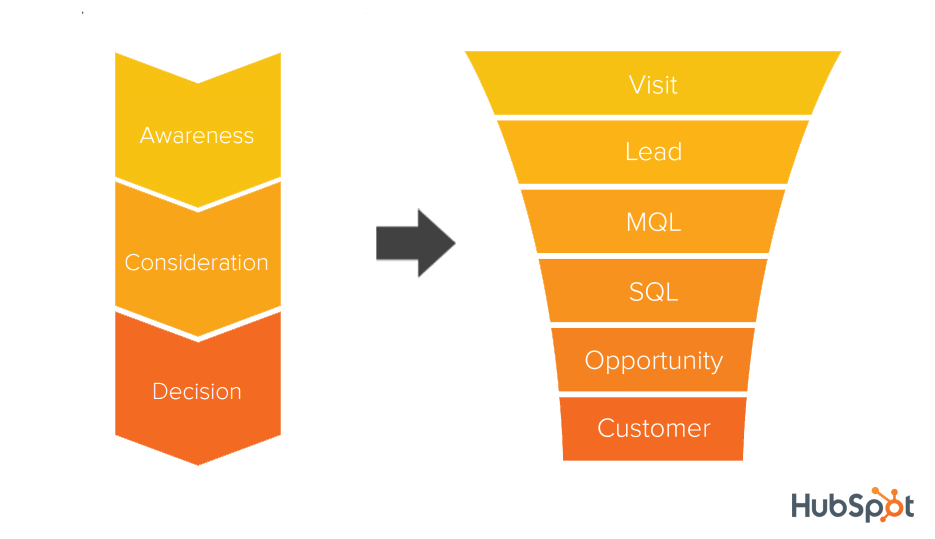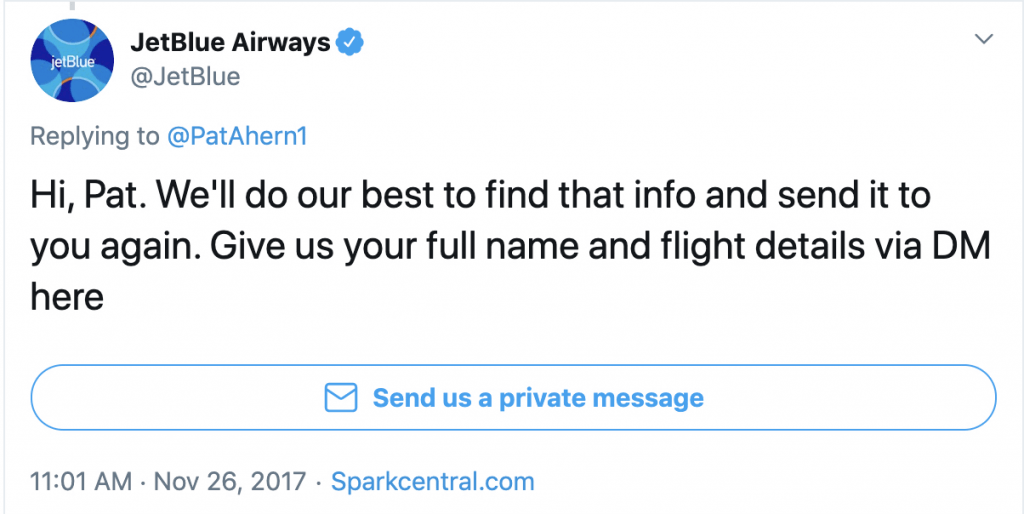How to Build Your Annual Marketing Plan (from a Marketing Agency Owner Who Helps Build a Dozen Every Year)
It’s time to start thinking about how we should be spending our marketing dollars in 2024.
That’s right: it’s time to start thinking about your 2024 marketing plan.
I know, it’s a lot to think about. Fortunately, we’re here to share some guidance.
We’ve helped 100+ businesses review their marketing performance and build their annual marketing strategies. Today, we’re going to talk about how to create the right annual plan to help your business have a successful 2024.
It would be foolish to write an all-encompassing article designed to give every business the exact formula to define their marketing budget. Every business is unique. There are far too many variables to consider to write a catch-all guide – let’s schedule a consultation call if that’s what you’re looking for.
We’ll delve into how target growth rates, competitive landscape, and much more should inform the development of your strategy.
The 6 Questions to Ask Yourself When Building a Strategic Marketing Plan
1. How much did your company grow last year?
Would you be satisfied with seeing similar growth metrics this upcoming year?
If so, ask yourself how much of your 2023 marketing strategy needs to change for 2024. Minimal movement in the competitive landscape could mean that copying your marketing plan from last year will get you 80% of the way there.
2. What marketing channels drove the most value last year?
We recommend breaking down the value of each marketing channel into two categories: marketing qualified leads (MQLs) and sales qualified leads (SQLs).
Both channels are essential for long-term growth. SQLs-centric efforts (sales-centric blog content, Google Ads, etc.) are great for short-term sales and converting MQLs into sales over time.
MQL-centric efforts (educational blog content, speaking engagements, etc.) will fill your pipeline and drive long-term growth.
Every company will define these differently. Here’s a breakdown of how our team distinguishes these two:
Marketing Qualified Leads
MQLs are those that express interest in learning about our services, either through submitting a contact us form on our website or schedule a call through our chat widget.
Sales Qualified Leads
SQLs are leads that have proven BANT (budget, authority, need, and timing). In other words, an SQL at Inter is someone who:
- Will find more value from working with us than they will need to invest to work with us
- Is ready to commit to working with us in the upcoming 1-2 months
- Has the authority at their company to decide to work with us
- Has the budget to invest in partnering with us.
We recommend identifying the top SQL and MQL drivers from 2022 and 2023. Focus your marketing budget on these two channels first (more on how to analyze these in our section about Reviewing your 2023 Marketing Expenses).
3. What’s your growth timeline?
Do you need to see a 10% growth every month to keep your job? Does your team understand that exponential growth often requires a longer time horizon?
Pay-per-click, or PPC, advertising (Google Ads, LinkedIn Ads, Facebook Ads, etc.) is a better short-term investment if you need to see consistent growth. Within a few months, you’ll have a strong understanding of the cost per customer acquisition (CPA) and will be able to ramp up spending accordingly to meet growth goals.
For example, you may see that your CPA with Google Ads is $500. Knowing that, you can comfortably assume that investing $5,000 will yield ten customers.
Long term, search engine optimization (SEO) and content marketing will help you to see exponential growth and much lower CPAs.
A company investing in SEO vs. PPC could expect to see an ROI curve similar to this:

(More on the ROI of SEO here)
However, SEO results are less predictable on a day-to-day basis. Most SEO efforts take 3-6 months to see traction – which can be difficult to explain to a boss in the short term.
4. How has your competitive landscape changed?
Run a competitor analysis to identify how each competitor has evolved:
- How has the competitive landscape changed over the past year?
- How do you expect it to change in the upcoming year?
- Have you seen signs that your biggest competitor is ramping up their digital marketing efforts?
- Have they started to gain more traction in organic search rankings?
- Have any competitors changed their pricing model?
What are smaller competitors doing? Are they growing at an alarming rate?
Run a SWOT analysis to see how you stack up against the newly updated competitive landscape.
- Strengths: which ones can you capitalize on? What value propositions are most meaningful to your ideal customers?
- Weaknesses: which should you focus on improving?
- Opportunities: what should you test out in 2024?
- Threats: what do you need to watch out for?
5. Is your market saturated?
Are you operating in an untapped market where you can collaborate with your competitors to increase the size of your industry?
Or are you operating in a highly-saturated market where one customer for your competitor means one less customer for you?
For those in untapped markets, look for opportunities to partner with your competitors on larger marketing campaigns to increase the awareness around your industry.
For those in saturated markets, think about how you can improve customer experiences to retain existing customers. Think about weaknesses in competing businesses that you can attack to gain more market share.
6. What did customer feedback look like over the past year?
Were customers happy with your products/services? Or did you receive a spike in complaints?
Work towards isolating the biggest customer pain points. This could be:
- Product-centric complaints like lack of durability of your product.
- Sales-centric complaints like overpromised results from the sales team.
- Customer service-centric complaints like the inability to get answers in a timely manner to support questions.
Great customer experience drives repeat and referral business.
If you’re struggling to isolate the root cause of negative sentiment, invest in market research to better understand your customer:
- Review your buyer persona: Where do your customers spend time online? Connect with them in those communities and offer them an incentive to schedule a 15-minute call with you.
- Analyze competitor reviews on platforms like Capterra and Amazon. What do their customers love about them? What do their customers hate about them?
Providing a great customer experience is the backbone of many of the most successful companies in the world. Marketing will have an uphill battle ahead of it unless you put your target customer first.
How Marketing and Sales Interact to Drive Revenue
The next step to building out your 2024 marketing strategy is understanding how your marketing efforts interact with your sales efforts to drive revenue.
The goal of marketing is to educate your target market on their pain points, develop a relationship between your target audience and your brand, and hand your sales team smoking hot leads.
These goals are part of a predictable process.
Borrowing a graphic from our friends at HubSpot:
A potential customer realizes that they have a problem or need.
They start researching the problem to learn more about the issue. In the process, they uncover several potential solutions. The potential customer evaluates those solutions and decides on one.
Later, they reflect on whether their choice solved their problem. If it did, they are likely to use that solution again and recommend the same solution to friends.
Most marketers break those customers into the following groups:
- Marketing Qualified Leads (MQLs) – people who make an effort to learn more about your solution.
- Sales Qualified Leads (SQLs) – people who are very interested in your solution as the potential cure to their problem.
- Customers – individuals who pay for your solution.
- Referrers – people who love your solution and go out of their way to suggest your solutions to friends who have the same needs.
MQLs, SQLs, sales, and sales funnels are most commonly referred to in businesses that have a long sales cycle (3+ months).
Businesses with a shorter sales cycle and smaller average order values can still employ this mindset. However, businesses with lower average order values need to focus on how to automate as much of this funnel as possible to make it sustainable in the long term.
For example, our friends at Brevitē might describe email subscribers as MQLs and SQLs as people who add items to the shopping cart on the Brevitē website.
Review 2023 Marketing Expenses
Take the time to review last year’s marketing expenses.
Here, we’ll break down your marketing expenses by channel (both in terms of time and money) and ROI.
Identifying the cost per hour of marketing activities
Set an hourly rate for your marketing department to compare apples to apples.
The best way to look at this is to review time tracking for your marketing team. If you don’t have this data, you can estimate the amount of time that your marketing team spent working this year.
Assuming 40-hour workweeks and 50 working weeks per year, each full-time team member had 2,000 hours of working time.
Take that total number of hours and identify how much of this time was taken up by meetings, admin work, product development, training, and other non-marketing-related tasks.
The remaining time is a safe estimate of how much time those team members spent on actual marketing activities. Combine the annual salaries of all of those individuals. Divide the salary total by the number of hours spent on marketing activities.
The dollar amount is the cost per hour of marketing activities.
For example, Paul earned $50,000 in 2023 and spent half of his workweek on marketing activities (1,000 hours). Paul’s hourly rate is $50/hour.
We recommend doubling or tripling that number to account for office expenses, training, HR, management, etc. In other words, you might choose to value an hour of Paul’s time at $100/hour.
Identifying total costs of marketing expenses
Now take that dollar per hour total, billboard expenses, Google Ads expenses, and more. Break these expenses down by advertising channel, and then identify the primary goal for each advertising channel.
Sample business objectives of various marketing channels:
- TV advertisements: drive brand awareness
- Email nurturing campaigns: customer retention and converting MQLs to SQLs
- Webinars: drive MQLs
- Trade show: book sales meetings
Building your marketing goals
Identify 1–2 key performance indicators (KPIs) that can be used to evaluate each marketing objective. Review results from last year to identify the count of each of those metrics that each channel brought.
Based on expenses allocated for each channel, you can now break down the exact cost per goal completion for each advertising channel, as well as the estimated value per goal completion.
We’ve built out a sample template that you can use as a starting point here.
Broad Suggestions for Your 2024 Marketing Efforts
With all this being said, here are a handful of broad marketing suggestions based on what we’ve seen generate the best ROI for our partners in the past.
1. Focus on PPC and SEO if looking for customer acquisition
Time and time again, investing in PPC and SEO yields the best ROI for businesses that we work with.
If you have a fixed marketing budget, replace portions of your PPC budget with additional content marketing and SEO initiatives as you start seeing more traction from organic search.
PPC investments result in linear growth. SEO investments result in exponential growth.
PPC is a reliable crutch for growing your business as you scale organic traffic visibility. However, as Andrew Chen points out in this article, investing in PPC can quickly get out of hand, especially in the case of VC-backed businesses that are pressured to scale their customer base exponentially.
Those investing in PPC should pay close attention to cost per customer acquisition (CPAs) and profitability per customer to understand how long PPC will be a smart investment for their business.
2. Spend money on social media if you’re looking to enhance your brand
Social media is a powerful tool for businesses that are looking to improve their brand perception or connect with their customers on a deeper level.
Social media is expensive when considering the time that needs to be invested in it.
However, it’s a powerful tool for those businesses that do value their brand.
Five years ago, I tweeted at JetBlue on a Sunday morning when I was struggling to find flight info for my flight the next day.
JetBlue’s social media team responded four minutes later, and I will never forget that.
To this day, I cite this as the best customer service I’ve ever experienced. Having employees monitor your social media channels around the clock is expensive as hell, but here it paid off for JetBlue.
3. Spend money on brand awareness if you’re looking for mindshare
The ROI of billboards and TV commercials is questionable at best. However, these channels, as well as lifestyle-centric content for your customer base, serve to boost brand awareness. They all help you to become first-to-mind when customers realize that they have a need.
These channels also help to preemptively prescribe your solution to customers before they realize that they need it. This helps build market share, especially in saturated markets.
4. Growth hacking has its place, but there’s more to marketing plans
We see a lot of startups that are consumed with thoughts of growth hacking and “going viral.”
Innovative marketing tactics have their place in helping early-stage businesses to build visibility (more on proven viral marketing techniques here). Techniques like this were designed to drive a spike in website traffic and sales in the short term.
However, visibility and sales wane as these techniques run their course. More importantly, most of these types of techniques fail to achieve business goals.
Viral marketing techniques have their place. However, those who fail to build longer-term traffic and sales from more established marketing channels will see their businesses decline and will find themselves reliant on “lucking out” with successful growth hacking campaigns.
Think through each of these questions and look at last year’s performance to build out the full marketing strategy that makes sense for your business’s unique needs.
Looking for help with scaling your sales in 2024? Learn more about how our content marketing and SEO services have helped businesses like Ridester to grow 487.1% in 20 months.
Interested in hearing more that we have to say? Subscribe to our monthly newsletter or follow us on Twitter to be the first to read our latest insights.
SCALE YOUR ORGANIC TRAFFIC
Subscribe to our monthly newsletter







